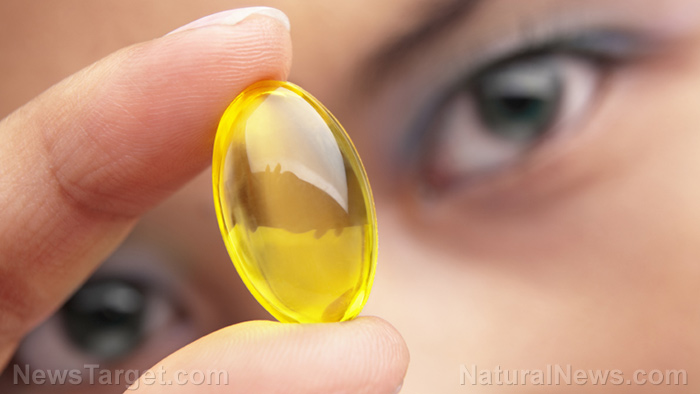Supplementing with resveratrol found to boost efficacy of knee osteoarthritis drug
04/23/2019 / By Janine Acero

Knee osteoarthritis (OA) is characterized by inflammation and pain. It could also cause tissue damage and morbidity. Researchers from Iraq evaluated the anti-inflammatory and pain-relieving effects of orally administered resveratrol in knee OA patients. Their findings were published in the Journal of Medicinal Food.
Resveratrol is a natural phenol and a powerful antioxidant with remarkable anti-inflammatory properties.
The researchers evaluated the effects of oral resveratrol as an adjuvant with meloxicam – a nonsteroidal anti-inflammatory drug for OA – in reducing knee joint pain and biomarkers of inflammation in comparison with a placebo.
The study involved 110 men and women, aged 45 to 75 years, who were diagnosed with mild to moderate knee OA. The participants were treated with 15 mg meloxicam and either 500 mg resveratrol or placebo every day for 90 days in a double-blind, randomized control trial.
The researchers used Visual Analogue Scale-100 scores to evaluate pain severity at the beginning and at the end of treatment.
Fasting blood was collected to determine serum interleukins 1-beta and 6, tumor necrosis factor-alpha, C-reactive protein, and complement proteins C3 and C4.
The resveratrol group experienced a time-dependent significant decrease in pain severity. Serum levels of the biomarkers were significantly reduced compared with the placebo group.
There is evidence to suggest that resveratrol may be an effective adjuvant option with meloxicam in the treatment of patients with mild to moderate knee OA.
Natural sources of resveratrol
You don’t have to have knee osteoarthritis to add resveratrol to your daily diet. As a polyphenol, resveratrol boasts of other health benefits, namely lowering blood pressure, increasing insulin sensitivity, protecting against oxidative stress, reducing inflammation, and protecting brain function.
To add resveratrol to your diet, add the following foods to your meals.
Grapes and wine
Eating fresh grapes is an excellent way of getting resveratrol. This antioxidant is commonly found on the skin of grapes. Red grapes contain 0.24 to 1.25 mg per cup (160 g) of resveratrol. You can also get it in the juice of red grapes, though in lower concentrations – averaging 0.05 mg per liter or 0.01 mg per glass.
Red wine is another good source of resveratrol, although not really ideal because of the alcohol content. Since red wine is neither pasteurized nor boiled, its resveratrol content is quite high – the average bottle of California Pinot Noir contains 5.01 mg, followed by French Beaujolais at 3.55 mg, California Zinfandel at 1.38 mg, and Californian Cabernet Sauvignon at 0.99 mg. White wine has minimal amounts of resveratrol at 0.20 mg per bottle.
Legumes and nuts
Peanuts have an antioxidant value that’s higher than actual nuts such as cashews and macadamia, and part of it comes from resveratrol.
Unlike in grapes, where resveratrol is mainly found in the skin, peanuts contain this antioxidant in all parts. Raw runner peanuts with their skin intact contain 1.12 mg of resveratrol per 100 g (3.5 oz) serving. Raw Virginia peanuts have as little as 0.01 mg for the same weight.
Processing, pasteurization, and heat diminish resveratrol content in foods, but boiled peanuts have a surprisingly high amount of the antioxidant, at 0.412 mg per 100 g serving. Natural pure peanut butters without added oil also contain resveratrol, at 0.07 mg for the same weight.
Pistachios are lesser-known sources of resveratrol, containing 0.11 mg per 100 g serving. Note that not all nuts have resveratrol – in fact, pistachios are the only known source from nuts.
Chocolate
Cacao and dark chocolate are known for their high antioxidant content. Cacao, also known as cocoa powder, contains 0.185 mg of trans-resveratrol per 100 g (3.5 oz). On an equal weight basis, that’s about half as much as your average California red wine.
Compared to cacao, dark chocolate contains 0.035 mg per 100 g serving.
Berries
Resveratrol is often found in red, blue and purple foods – it’s no surprise that berries are some of the best sources of this antioxidant.
Cranberries are particularly abundant in resveratrol with 1.92 mg per 100 g serving. Red currants come in second at 1.57 mg per 100 g. Blueberries clock in at 0.383 mg per 100 g, followed by strawberries at 0.35 mg per 100 g.
Sources include:
Submit a correction >>
Tagged Under:
aging secrets, alternative medicine, anti-inflammatory, arthritis cures, berries, dark chocolate, food cures, food is medicine, grapes, knee osteoarthritis, Meloxicam, natural cures, natural medicine, NSAID, nuts, pain relief, painkiller, polyphenols, red wine, remedies, resveratrol, supplements
This article may contain statements that reflect the opinion of the author
RECENT NEWS & ARTICLES
FoodCures.News is a fact-based public education website published by Food Cures News Features, LLC.
All content copyright © 2018 by Food Cures News Features, LLC.
Contact Us with Tips or Corrections
All trademarks, registered trademarks and servicemarks mentioned on this site are the property of their respective owners.





















